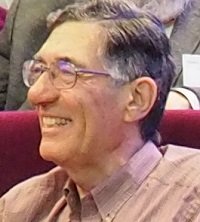John LoSecco is a Professor of Physics at the University of Notre Dame. His research is in the field of elementary particle physics. He received a BS degree in physics from Cooper Union in New York and an AM and PhD degrees from Harvard University. After a postdoc at Harvard University, he held faculty positions at the University of Michigan and Caltech before joining the Notre Dame physics department. He has taught both graduate and undergraduate courses including a popular course on elementary cosmology for non-science majors, which covered Black Holes, Schrodinger's Cat and the Big Bang. His research has been in the areas of neutrino physics, grand unified theories, astrophysics, exotic mesons, CP violation, heavy flavor physics and neutrino oscillations. He helped found the field of astro-particle physics. He is a corecipient of the Bruno Rossi prize in High Energy Astrophysics of the AAS for observation of a six second neutrino burst from a supernova in the Large Magelanic Cloud galaxy and a Fellow of the Royal Astronomical Society (UK). He was a Fulbright Scholar at Paris VII and Commissariat à l'énergie atomique (CEA) Saclay in 2012-2013.
USAID Profile
Global Development Lab
Mission Engagement and Operation, Operational Innovations (MEO/OI)
John LoSecco serves as a Senior Innovations Advisor at USAID. His work with LAB/MEO/OI has been somewhat diverse. He has been involved in the Clear Choice initiative that tracks Chinese investments and aid in the developing world and contrasts it with western aid. A goal of USAID is the "journey to self reliance" for the recipient countries, so awareness of alternate resources is important in planning. A related project is the 5G initiative to understand and compete with Chinese telecommunications infrastructure investment in developing nations and provide secure alternatives. It is related to Clear Choice since those communications investments are tracked. He has also been assigned to oversight of an initiative to utilize satellite imagery and AI pattern recognition to identify regions of conflict in "non-permissive" environments, places where local conflicts make field operations dangerous.
|




